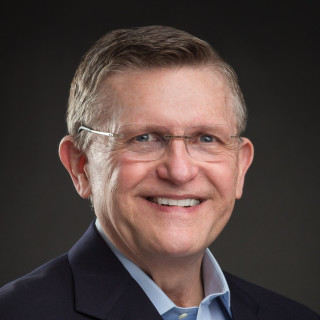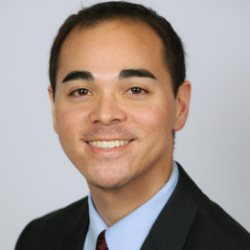Rushing to the start of my hospital weekend coverage, the pager went off: Can you please call me regarding an end-of-life situation?
As a palliative and hospice fellow at a large academic center, it was not uncommon to receive messages like this. It did feel different that the message was coming from an attending surgeon at 8 a.m. on a Saturday morning. I decided to call from the car. He told me the story: the patient was a 70-year-old female with a newly diagnosed ovarian mass transferred from an outside hospital for surgical evaluation; her hospitalization had been complicated by acute renal failure, no longer a surgical candidate. He described a very loving, involved, and hopeful family that he'd been communicating with daily. “I think she is dying and I want to recommend hospice. I’m honestly not quite sure about the details of how to do that.”
My first reaction was unkind: How was it that a surgical oncologist did not know how to enroll a patient in hospice? I considered possible responses: Tell him to ask case management to talk to the family after he says she is no longer a surgical candidate? Offer for him to place a formal consultation and have the conversation with the patient and family myself? Transitioning patients to a comfort-focused approach and discussing next steps was muscle memory at this point.
But as I listened to the surgeon, I heard his distress. I don’t think I would have, but I was in the process of emotionally recovering from the agony of a first of my own. Just that prior week, I had done a mandatory rotation in pediatric palliative care. The last time I had been around sick children was six years ago in medical school, and I had most definitely never seen a child dying. Now, I could not stop thinking about baby Jessie.
It already felt too hard to hear Jessie's one-liner in morning rounds: 7-month-old, no past medical history, presenting after cardiac arrest at home status post cooling with severe neurological damage; the family has made the loving decision to extubate and transition to comfort. But to see baby Jessie was too much. Wrapped in a blanket, eyes open, moving his hands and feet around, sucking and lip biting. He reminded me exactly of my 7-month-old baby at home. How could it be that he was dying and she was thriving? This was so different from an eminently dying adult no longer walking, talking, or eating. The only relief I felt was that his parents were not currently in the hospital room. I felt incapable of producing any words or even thoughts beyond extreme sadness.
I spent close to an hour on the phone with the surgeon. I focused on a few things: acknowledging how hard this situation must be for him — he had accepted the patient from an outside hospital to offer a surgical solution and now this was not realistic; commending him for spending so much time communicating with the family; and finally, teaching him how to recommend a comfort-focused approach and describe the philosophy and benefits of hospice. I would be late to my own shift seeing new consults and follow-ups for our palliative care service, but the impact of this conversation seemed significant. This was a first time for him. What his page had really meant was, “I need help. Please.”
Later that day, I walked into the room of a 40-year-old woman dying of metastatic colon cancer with her husband lying next to her in the hospital bed and her young children playing cards in the corner of the room. She lay there, unresponsive to voice, as he kissed her head and held a livestream of their church mass on his phone. This type of experience felt normal, natural, and familiar — to me. I asked questions about symptoms and shared empathetic statements with ease. How far I have come, I reflected. When I had first started my first job out of residency as an oncology hospitalist, I frequently cried on the 15-minute drive home. Mental images of young adults with cancer woke me from sleep, and existential questions of How can such sadness exist? consumed me. Perhaps this family appreciated how calm and collected I presented myself, or maybe they wanted to see my tears.
With all things good and bad in life, it's a truism that more frequent experiences become familiar and dampened. But how can we, in our comfortable realms, identify and help those who are experiencing their firsts? Intense firsts can often be found within the journey of becoming a health care professional: disclosing difficult news, physically examining a body, seeing a dying person, performing a procedure. They don’t stop with the end of medical training. As attendings, we continue to experience new patients and families, and new clinical presentations. Part of the joy of medicine is the intensity and uniqueness, but that doesn’t mean we don’t get overwhelmed. What I've realized is that I don't find it particularly helpful to feel alone in these experiences, or to simply be told, “It gets better.” What I’ve found most comforting is to actually hear, “This was hard for me, too,” or “It’s OK to not be OK.”
Now I'm always on the lookout for firsts. Not only for clinicians and clinicians in training, but also for patients. When does someone have that look — that inside they are overwhelmed, traveling in unknown places of worry and uncertainty? In these moments, I slow down. Slow down to breathe, to think, to acknowledge the situation, to provide support and information the best I can. To say, “Let's talk about it.” And, I hope that for whatever future firsts I myself may have, I find people who will do the same.
What medical first did you experience recently? Share your learning experience in the comments.
Charlotte Grinberg is a fellow in hospice and palliative medicine at Beth Israel Hospital in Boston, MA. Her writing has appeared in JAMA, Health Affairs, and the Annals of Internal Medicine. She tweets at @drcharlotteG. She was a 2020–2021 Doximity Op-Med Fellow and continues as a 2021-2022 Op-Med Fellow.
All names and identifying information have been modified to protect patient privacy.
Image by fedrelena / Getty







